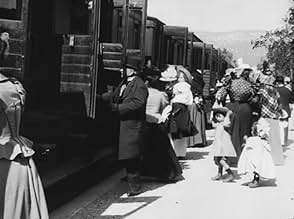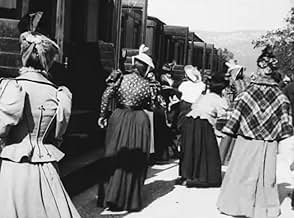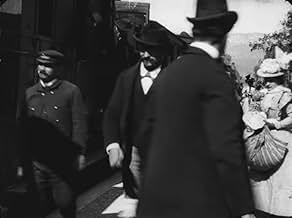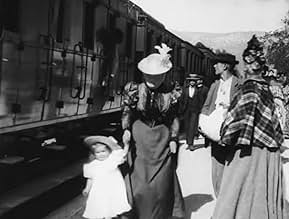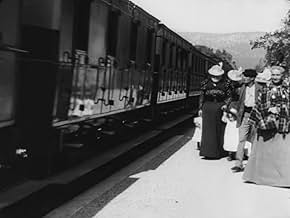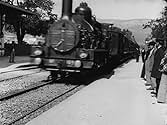IMDb RATING
7.4/10
13K
YOUR RATING
A train arrives at La Ciotat station.A train arrives at La Ciotat station.A train arrives at La Ciotat station.
Storyline
Did you know
- TriviaPopular legend has it that, when this film was shown, the audience fled in terror, fearing being run over by the "approaching" train. This legend has since been identified as promotional embellishment, though there is evidence to suggest that people were astounded at the capabilities of the Lumières' cinématographe.
- ConnectionsEdited into Louis Lumière (1968)
Featured review
There doesn't seem to be anything particularly exciting about an approaching steam locomotive, but somehow this image has stuck, the first iconic scene in cinematic history. Produced by pioneering French filmmakers Auguste and Louis Lumière, 'L' Arrivée d'un train à La Ciotat / Arrival of a Train at La Ciotat' was filmed at La Ciotat, Bouches-du-Rhône, France on December 28, 1895 and first screened to a paying audience on January 6, 1896. The 50-second long film, like most other Lumière shorts, successfully captures a brief snippet of everyday life, chronicling the gradual approach of the train, its slow to a halt, and the disembarkment of its passengers.
For many years, there has been an enduring myth than, upon the first screening of the film, the audience was so overwhelmed by the image of the train bearing down upon them that they fled the room in terror. This has been shown to be something of an embellishment, and, though the film would undoubtedly have astounded and mesmerised audiences, there was never any real mass panic. French scientist Henri de Parville, who attended an early screening, is said to have written: "The animated photographs are small marvels. ...All is incredibly real. What a power of illusion! ...The streetcars, the carriages are moving towards the audience. A carriage was galloping in our direction. One of my neighbors was so much captivated that she sprung to her feet... and waited until the car disappeared before she sat down again." This, I think, adequately sums up how remarkable the film must have seemed back in 1896.
Auguste and Louis Lumière obviously recognised the power of illusion offered by their Cinématographe. In order to maximise the shock value of the approaching train, they have mounted the camera as close as possible to the edge of the platform, so that the audience feels as if they are almost standing right in the locomotive's path. The people departing from the train are just normal citizens going about their day (several Lumière relatives, however, can be spied on the platform), enhancing the realism of the short. Cinema does not get much more memorable than this.
For many years, there has been an enduring myth than, upon the first screening of the film, the audience was so overwhelmed by the image of the train bearing down upon them that they fled the room in terror. This has been shown to be something of an embellishment, and, though the film would undoubtedly have astounded and mesmerised audiences, there was never any real mass panic. French scientist Henri de Parville, who attended an early screening, is said to have written: "The animated photographs are small marvels. ...All is incredibly real. What a power of illusion! ...The streetcars, the carriages are moving towards the audience. A carriage was galloping in our direction. One of my neighbors was so much captivated that she sprung to her feet... and waited until the car disappeared before she sat down again." This, I think, adequately sums up how remarkable the film must have seemed back in 1896.
Auguste and Louis Lumière obviously recognised the power of illusion offered by their Cinématographe. In order to maximise the shock value of the approaching train, they have mounted the camera as close as possible to the edge of the platform, so that the audience feels as if they are almost standing right in the locomotive's path. The people departing from the train are just normal citizens going about their day (several Lumière relatives, however, can be spied on the platform), enhancing the realism of the short. Cinema does not get much more memorable than this.
Details
- Release date
- Country of origin
- Language
- Also known as
- The Arrival of the Mail Train
- Filming locations
- Production company
- See more company credits at IMDbPro
- Runtime1 minute
- Color
- Sound mix
- Aspect ratio
- 1.31 : 1
Contribute to this page
Suggest an edit or add missing content

Top Gap
By what name was The Arrival of a Train (1896) officially released in India in English?
Answer
